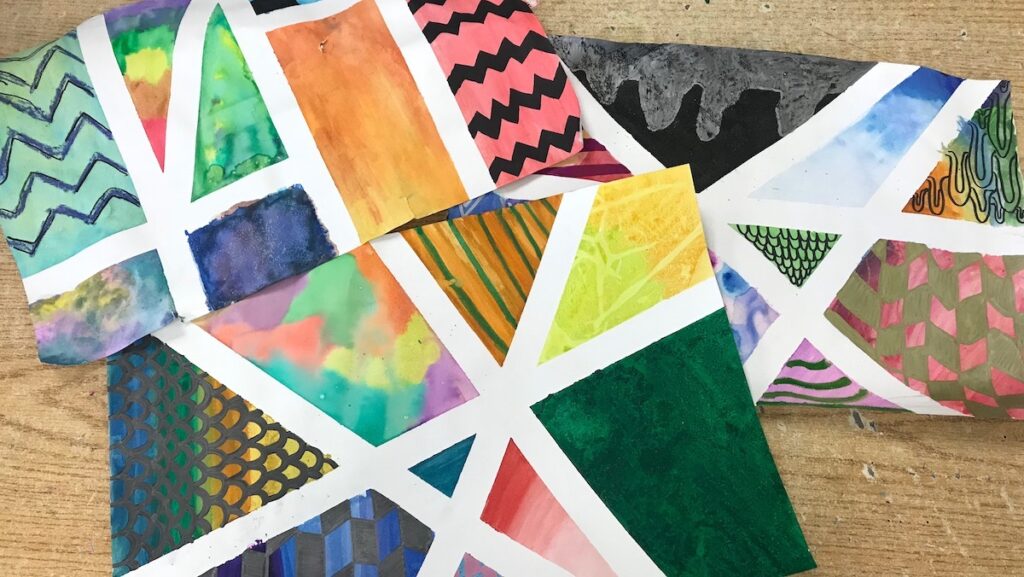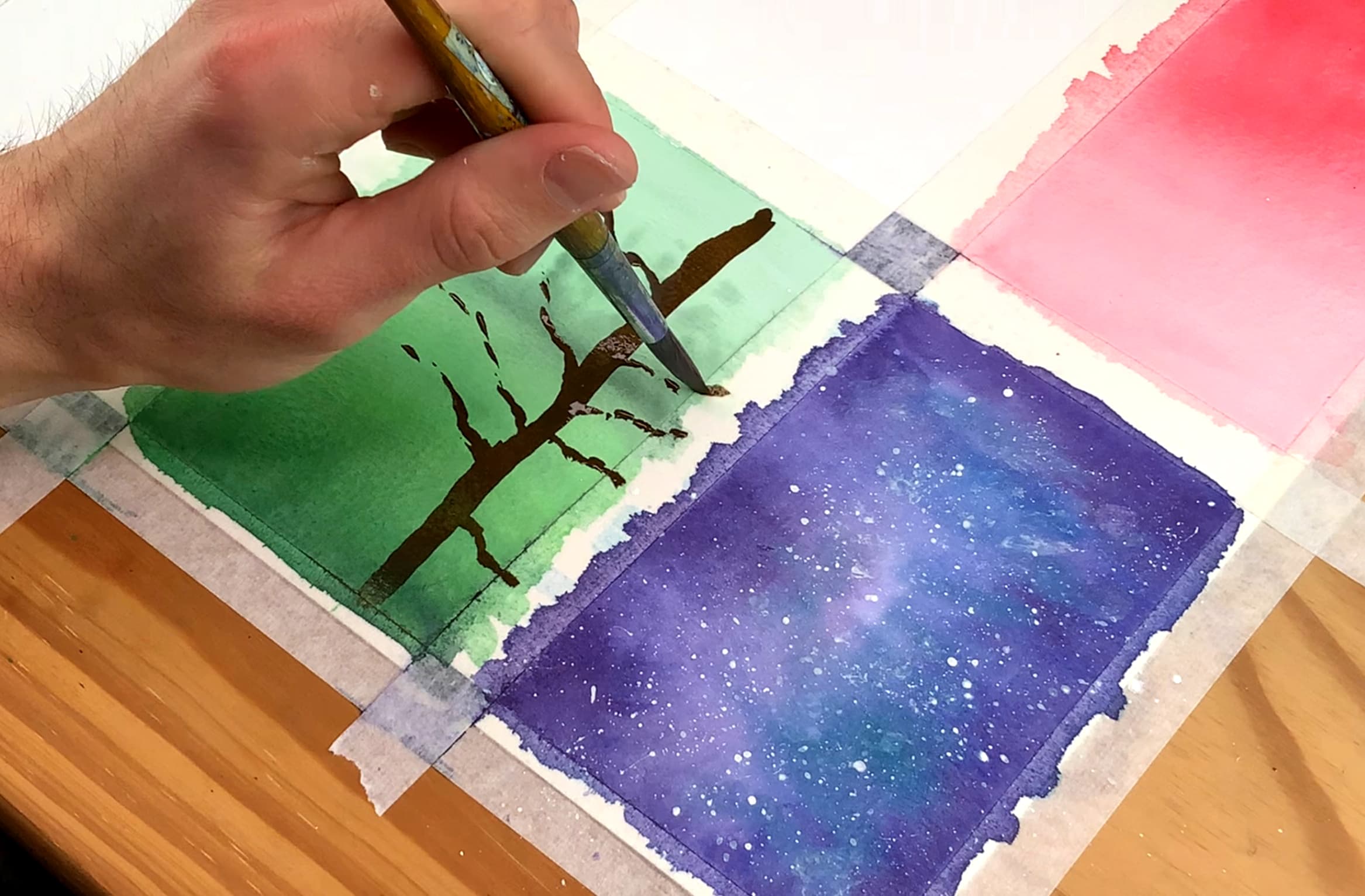Learning how to paint with water colour paints may seem difficult and strange at the beginning especially if you’re used to painting with oil or acrylic paint. If you are in this type of situation, you don’t need to worry because listed below are water colour painting tips that will help you as a beginner.
Color Harmony
One of the most important tips for beginners is color harmony. You have to learn how to maintain water colour paints harmony throughout your painting.
An excellent way to achieve this is to limit the number of colors on your palette. When you have a water colour paint palette containing about 20 colors, you might be tempted to dip your brush into several water colour paints while painting. The result of this is usually a muddy and discordant work.
Often, your subject is what determines the color to choose. Say, for instance, you are trying to paint a building. You could start your painting with earthy water colour paint colors, followed by a suitable color for the house and a blue color for the sky. If you are starting, limit your color to just three. As you develop your skills, you can then increase them.
Avoid Overworking Your Painting
It would help if you were careful not to overwork your painting. A painting with carefully labored detail from one end to the other may be difficult to view. If you’re an artist that loves to work with fine detail, then you should consider adding some area of relief.
Get the Necessary Tools
Giving you tips on water colour painting will be incomplete without talking about how to buy water colour paint materials and tools you will be needing.
One beautiful thing about water colour painting is that you don’t need to break the bank before starting. The tools required aren’t that much.
All you need to get started are a few water colour paint sets, four to six brushes, water colour paints paper for painting, and that should be all. You can use an old dinner plate that is wide enough to serve as your water colour paint palette, or you can decide to get the plastic one if you have enough cash.
When starting, you should buy water colour paints with the artist quality water colour paints set. The quality of the paint used for painting greatly impacts the outcome of your painting.
Here’s a quick recap of the list
- Brush
- Water colour paints set
- Water colour paper
- A foldable plastic palette
Once you can get the list above, then you are good to go.

Center of Interest
The center of interest of your painting is where the viewers immediately get attracted once they view your painting before wandering to other aspects of the painting.
It is more like the most interesting part of the painting. It must have maximum contrast, and the water colour paint applied to this area must be the strongest.
To have a successful painting, your center of interest or focal point must be rightly placed. You should avoid placing it in the middle of the painting unless you are working on a static or formal composition. Instead, it should be kept in an unequal position from each side of the painting. An excellent way to place your center of interest well is to put the vertical and horizontal axis into a ratio of 1:2.
Foreign colors
You must have, at one time or the other, looked at a painting and observed a water colour paint that feels off. Well, this is possible as there might be paint splashes. If you find yourself in such a situation, you don’t need to panic. All you have to do is introduce more of the discordant watercolor paint to the rest of that painting to make it more uniform. Doing this will conceal the mistake. If you restrict the color to just the focal point or area of interest, the watercolor paint will be out of place.
Sketches
Thumbnail sketches allow you to have control over your subject and make shuffling of composition easier before you embark on painting.
Once you have a plan of how you want your painting to go with your sketches, then you can easily maneuver moving between the light and dark portion of your painting.
To make things easier, you can break your sketches into four different areas. Doing this will ease the process of painting and will allow a good contrast in the area of interest.

Protect White Paper
One thing you have to keep in mind in water colour painting is its transparency. Water colour paints are transparent. Thus, it would help if you decided from the beginning of your painting areas that will be left unpainted. It is often advised that you start painting those areas that will require light colors, followed by dark ones. To have a unique and outstanding painting, ensure you protect the whites.
Tie Up Colors
Adding a few more calligraphic lines in a harmonious color is an excellent way to tighten a disjointed painting.
You can use one or two liner brushes, pens, or ink to draw. Using more than two can create confusion.
If your choice of a liner is ink, try and spray a few quantities of water immediately when you spray the ink. This will soften the lines, giving rise to a beautiful feathering effect.
Dark Tones
Neutral darks are not the best option when it comes to water colour painting. To add more life and character to your painting, it is often advised to use warm or cool darks. You can achieve this by adding opaque yellow during mixing. Gold or Indian Yellow are also great options. Other types of yellow produce muddy darks.
While mixing, you should keep in mind that you’ll need more of the pigment than water. Only a little water is required. For this mixing, it is a great idea to dip from one color to the other without rinsing the brush. Rinsing allows further dilution, moving the color away from strong dark.
By following the above tips, you should have a great painting piece at the end of your work. Although you should keep in mind that mistakes are inevitable, your ability to blend them into the painting and move on determines how fast you’ll grow. It would help if you concentrated more on the positive aspects of your work as this is a great way to build confidence.
